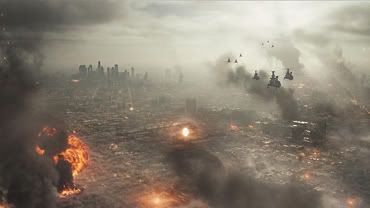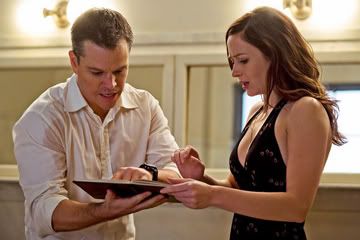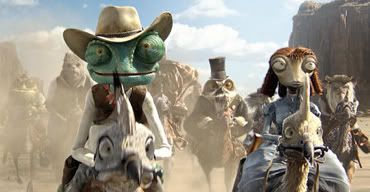

"Sucker Punch" (2011)
Zack Snyder's "Sucker Punch" is weird, ridiculous, overlong, flawed and really isn't even that good. What it is, however, is an affirmation of Snyder's uncompromising work as a director. He knows what he wants to make, has a passion for it and sure as hell for whatever it's worth, he gets it out there even if it all doesn't work--by a long shot. This is the first time Snyder has directed his own story; most all of his other work (notably "300" and "Watchmen") were graphic novel adaptations. The screenplay was co-written with Steve Shibuya, and places the almost fatally ambitious film as a blend of Quentin Tarantino, David Lynch, "Showgirls," "Inception" and I'm sure countless other vague mash-up of influences. I'm really left having to call Snyder's latest work an action musical. I'll explain later.
The opening slow-motion sequence à la the opening credits of "Watchmen" tells the entire backstory without uttering a word. A young woman named Baby Doll (Emily Browning) is framed by her evil step father for the murder of her sister. This sends her to a bleak, dirty and rundown insane asylum that turns out to be more like a prison for women. From the moment we're introduced to this place, nothing about it seems right.
Baby Doll is first brought to a room called the auditorium occupied by the sultry and severe-looking head shrink named Madam Gorski (Carla Gugino), a corrupt hospital orderly, Blue (Oscar Isaac), and a team of almost unrealistically attractive inmates: Sweet Pea (Abbie Cornish), her sister Rocket (Jena Malone), Blondie (Vanessa Hudgens) and Amber (Jamie Chung). Their names are like those of strippers because suddenly--and completely unmotivated--the asylum transforms before our eyes into a sleazy nightclub where the girls' only use there is to dance for paying men.
In this other world, which is perhaps part of Baby Doll's damaged psyche, Madam Gorski becomes the terse dance instructor and Blue becomes the vile and dastardly head of the club. As for the girls, they are the seductive and scantily-clad dancers, and Baby Doll needs to prove that she, too, can dance.
The movie revolves around four central action set pieces, the first of which is dominated solely by Baby Doll. This sequence, and the three to follow, are all triggered by Baby Doll's dancing which not only transports us to new realms but also just so happens to hypnotize everyone in the room. Every time she dances, we enter new alternate realities all of which are vastly different and fantastical, equal parts extravagant and beautiful and murky and ugly with everything coated in shades of rust and bronze. It's all the quality work of special effects we've come to expect from a well-produced Zack Snyder film.
In the first sequence we're introduced to a mentor played by Scott Glenn who appears to be greatly channeling the late David Carradine from a combination of his older kung-fu movies and "Kill Bill" days. He shows up at the start of every action sequence providing Baby Doll and her mini-skirted cohorts with a debriefing of their mission ahead and snippets of trite motivational wisdom such as, "Never write a check with your mouth you can't cash with your ass." And then each and every time, without fail, he includes, "Oh, and one more thing." Unintentionally humorous? Purposely bizarre? Hard to say, but in either case, it's an occurrence that feels straight out of a video game.
Whether they're slaying a giant dragon, slaughtering a bunch of steam-powered Nazis in WWII trenches or defusing a futuristic-looking bomb, each mission has a correlation with an item the girls need in reality to escape the asylum/nightclub. The way Snyder sets the action to a unique dance floor soundtrack throughout the whole movie is rather impressive and catchy. It's what led me to the conclusion of calling it an action musical. It certainly has influences of one because the credits contain a full-blown musical number.
There's a lot here that doesn't make sense, though. Like, do the girls see the worlds as Baby Doll does, or do they only see the reality of the situation? Only once do we see how the dream world and reality sync up; every other time it's up to our own imagination. Also, we never see Baby Doll's dance. I found myself wondering what she could possibly be doing that's so intoxicating.
In any case, complete understanding isn't entirely required with a movie like this. The dialogue and plot are supplement, really, and you also can't help but wonder about the point. Softcore exploitation or feminist girl power? Mind-numbingly repetitious or rhythmically absorbing? Whether brilliant or idiotic--or maybe a bit of both--there's something about "Sucker Punch" that works and is telling of Zack Snyder, a continually growing director who--no matter if he makes a misstep or not--cannot be dismissed.










